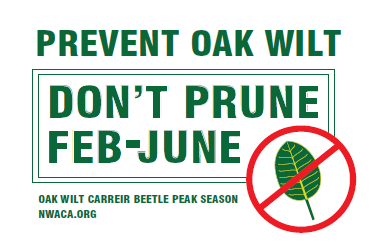Christian Mendoza described the work of the Austin Police Department’s Office of Community Liaison, with details about the program he manages for the senior population.
2023 NWACA Annual Meeting Slides
This presentation at the 2023 Annual Meeting described the events and activities of NWACA for the year, and it includes the Oak Wilt presentation that was done.
2024 NWACA Annual Meeting Slides
The 2024 Annual Meeting was held May 15, 2024, with these slides as the overall presentation. Also at the meeting Austin Water’s Wastewater Department showed these slides explaining the infrastructure updates underway in our neighborhood.
2025 NWACA Annual Meeting Slides
The 2025 Annual Meeting was held March 26, 2025, with these slides as the overall presentation. Additionally the following materials are available for download:
- Wildfire Prevention w/ Marc Duchen (Austin City Council District 10 Rep)
- Firewise: Home Hardening from Austin Fire Department Wildfire Division
- Wildfire Mitigation from Austin Parks & Rec Land Manangement
- Vegetation Management from Austin Energy
- Wildland Conservation from Austin Water
4th of July Float Contest Rules
A NWACA Map for WUI Response Index
This map shows an overall wildfire risk index for the NWACA area. The index values are color coded, as shown on the map legend. They are a composite of three components of fire behavior in the wildland urban interface (WUI):
- vegetation hazard, based on density
- slope
- structure density of the area
As you can see from the temperature bar at the bottom of the map, about half of our neighborhood is at extreme or high risk in a wildfire event.
A NWACA Map of Conflagration Risk
This map shows each of the residences in NWACA, color-coded for their risk in a fire situation, based on proximity to other residences. The risk might be from a wildfire or from a nearby house fire. See the legend at the bottom of the map.
In addition, the map has circled the primary evacuation points for this part of Austin - see the red circles. In case exit is not viable, there are temporary evacuation zones where residents might be able to shelter in place, shown with white stars - the area around Murchison Middle School and the Dell Jewish Community Center.
Aerial Map of Austin Oaks (pdf)
Aerial view, with buildings and their zoning marked, of current Austin Oaks site
APD Resource Manual – 2014
Austin Police Department quick reference for who to call about a variety of problems and situations.
Ashe Juniper Reference Document
This document provides a description of the positive contributions of the Ashe juniper (aka cedar) tree to the Central Texas environment, as well as dispelling a number of myths about the tree.
Austin – Coexisting with Coyotes
A brochure from the City of Austin describing the habits of coyotes, how to haze them, and when to report their activities to 3-1-1
Austin – Urban Coyotes (PDF)
Helpful reference on how to minimize having problems with Coyotes in Austin and Travis County.
Austin Coyote Calls to 3-1-1 2005-2014 (PDF)
Numbers of calls made over last years regarding coyotes; 2014 total is an estimate based on first half of year.
Austin Oaks Timeline
Timeline for the meetings and decisions to be made about the PUD re-zoning request for Austin Oaks, based on current information from City Staff (version 2)
Austin Wildland Urban Interface Code
When building or remodeling in the City of Austin, you need to be mindful of the threat of wildfire and build with as much resilience as possible. Implementation of the Wildland Urban Interface Code for the City of Austin began in January 2020.
To see the details about the code and materials currently approved, visit
this web page:
If you have questions about specific materials or about details in the code, contact the Austin Fire Department’s Wildfire Division at [email protected]
Baker – California Studies of Coyote Management (PDF)
Discusses methods of control that have been successful - trapping, hazing, removing attractants.
Ball Moss (PDF)
Article from Texas Forest Service about how to handle Ball Moss in trees
Block Captain Guidebook (pdf)
This booklet is used by those who organize neighbors into a Neighborhood Watch group.
Block Captain Meeting Handout (DOCX)
Simple handout on Neighborhood Watch to review at an initial neighborhood meeting
Block Captain Meeting Invitation (DOCX)
Use this to gather neighbors for a first meeting about Neighborhood Watch.
 Until July, sap beetles are attracted to fresh tree wounds and can transmit the oak wilt fungus to a healthy oak tree during pruning. The heat of July-August is believed to suppress the beetles and reduce the risk of infection. Note that all trees are under the normal stress of summer, depending on soil moisture, and some are still in their growing season then. So if you haven’t completed pruning of oaks by now, it’s best to wait until fall.
Until July, sap beetles are attracted to fresh tree wounds and can transmit the oak wilt fungus to a healthy oak tree during pruning. The heat of July-August is believed to suppress the beetles and reduce the risk of infection. Note that all trees are under the normal stress of summer, depending on soil moisture, and some are still in their growing season then. So if you haven’t completed pruning of oaks by now, it’s best to wait until fall.